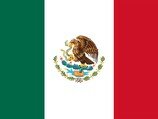The Segmental Info System
Culture of Cancun and the Mexican Caribbean
Yucatán and Mexican Caribbean culture differ from the rest of Mexico
The early Mayan presence in the Yucatán Peninsula and Quintana Roo ensured that the region would develop a history and culture that was unique in Mexico. Mayan culture has persisted in the face of colonialism and near extinction and remains a pervasive and captivating presence in the region to this day.
Approximately 60 percent of the more than 106 million Mexicans are mestizo, or of Amerindian and Spanish descent. Another 30 percent are considered wholly Amerindian. While Spanish and Mexican cultures are widely represented in the region, the persistence of Mayan culture gives the Yucatán one of the most compelling blends of ethnicities in Mexico. By 1850, the Mayan population in the Yucatán had dwindled to less than 10,000 as a result of disease and combat. Cozumel, just to cite one example, was abandoned in 1600 as a result of smallpox. Despite these challenges, the Mayans persisted in the jungles of Quintana Roo and would cause problems for the Spanish and Mexicans with rebellion all the way through the Caste Wars that lasted until the early part of the 20th century. To this day, around 800,000 people in Mexico speak the Mayan language.
History of the Mayan Culture

During their Classic Period, the Mayan people developed a civilization that rivaled Europe in mathematical, scientific, and cultural achievements. Mayan religion was heavily influenced by eschatology and the concept of time, and Mayan people used advanced techniques of astronomy that observed solar, lunar, and religious occurrences to develop a calendar that was advanced far beyond its analogous European counterpart. A hieroglyphic writing system was also devised during the Classic Period, in addition to advanced mathematical formulas and concepts.
Mayan urban centers during the period were used primarily as religious and ceremonial sites to support the rural community surrounding them. Architecture was typified by the use of limestone to create pyramids and temples. Art was important in the depiction of religious narratives, and advanced art techniques were used to adorn these religious sites with frescoes, murals, and sculptures. Religious figures were deeply important within the culture, and religion was an integral aspect of life for the Mayans. Many women would make a pilgrimage to Cozumel, for example, as it was the home of the goddess of fertility and childbirth.
Arrival of the Spanish
Nine years after Columbus first spotted a Mayan canoe in 1502, two Spanish sailors shipwrecked along the Yucatán coast. Years later, when Hernán Cortés landed in Cozumel, one of the sailors, Gonzalo Guerrero, chose to stay with his Mayan family, signaling a beginning of the mestizo population in the Yucatán.
...strong sense of family and community.
One of the most notable Spanish influences on the Amerindians was the propagation of Roman Catholicism. With the establishment of the encomienda system, the Spanish would enlist Franciscan monks to convert the enslaved Mayans to Christianity. The effect of this effort was certainly potent, as today a full 89 percent of the Mexican population is Roman Catholic. In addition to being a deeply religious population, modern-day Mexicans have a strong sense of family and community. Divorce rates are low, and family units are often typically larger than they are in the United States. One of the most important observances in Mexican culture, the Day of the Dead, celebrates loved ones and family members who have passed away.
The blending of Amerindian and Spanish culture is further seen in art, where Christianity is depicted in traditional Amerindian art styles, forms, and colors. Mayan cities were typically painted yellow or red, and bright, vibrant colors are also used to depict religious scenes. Modern Mayan art includes the creation of masks and sculptures, both of which are often used for religious or ceremonial dance purposes.
While Spanish colonial influences resulted in the introduction of beef, pork, and chicken to the cuisine of the Yucatán, the Mayan use of corn and fruit in dishes has persisted.
With a strong Amerindian influence, the culture of the Yucatán is unique both within the Caribbean and Mexico. Despite the influx of tourism to the area, modern-day Mexicans have a strong history and sense of their heritage and culture that sustains many of their long-practiced traditions and customs.
Help us improve! We welcome your corrections and suggestions.

-
Best Hotels For... >>
Dining Options
Entertainment /
NightlifeFamily Vacations
Swimming Pools
Tennis
Hotels by Star Rating >>
5 Star Hotels
4 Star Hotels
3 Star Hotels
2 Star Hotels
1 Star Hotels
More... >>
Camping & Eco-Tourism
Reservations
Search
-
More... >>
Golf
Sports
Tennis
Other Activities
-
More... >>
Customs
Driving
Electricity
Embassies
Health
Hours of Operation
Passports
Postal Services
Telephones
Tipping
Tourist Offices






_flag_thumbnail.jpg)




















_thumbnail_right.jpg)

